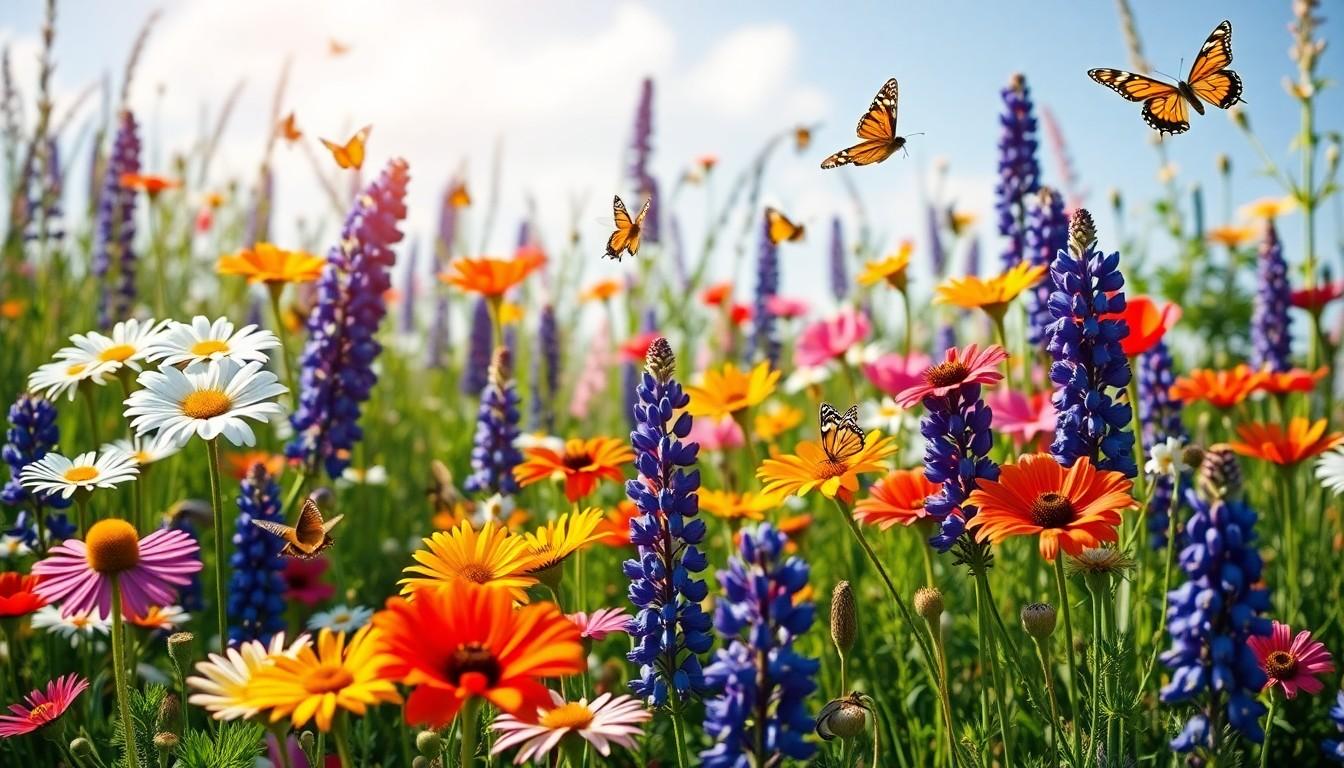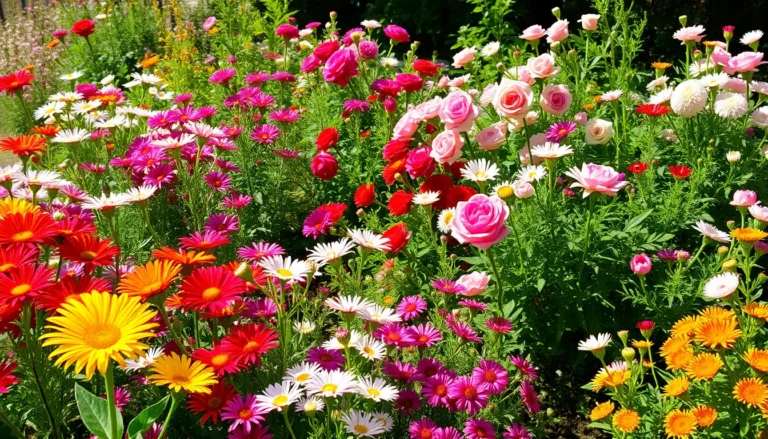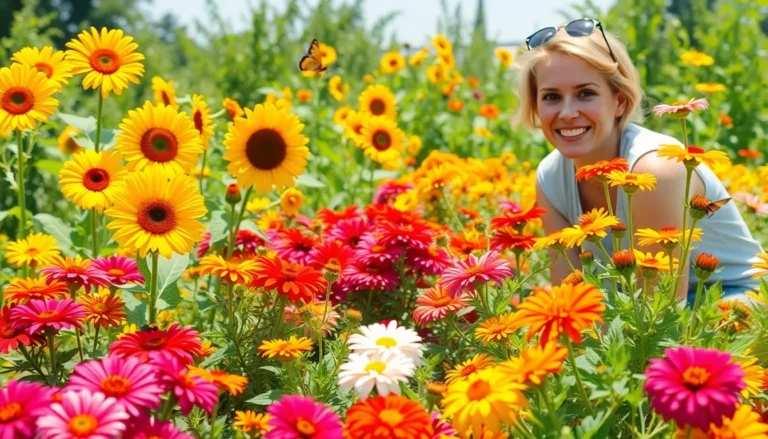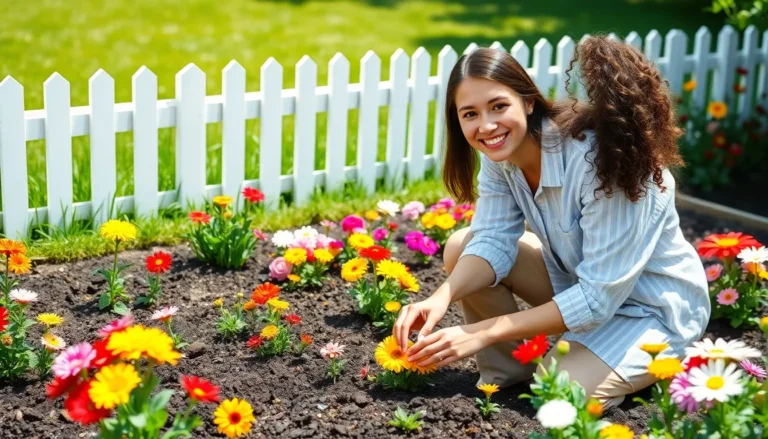Imagine stepping into a vibrant tapestry of colors, where bees dance and butterflies flit about like they own the place. A wildflower garden isn’t just a feast for the eyes; it’s a sanctuary for nature’s tiny superheroes. With minimal fuss and maximum flair, these gardens transform any ordinary yard into a whimsical wonderland.
Wild Flower Garden Ideas
Wildflower gardens boast numerous benefits that enhance both the environment and aesthetic appeal of a landscape. These gardens play a crucial role in supporting local ecosystems.
Enhancing Biodiversity
Enhancing biodiversity occurs naturally with the introduction of wildflowers. Native plant species thrive, attracting a diverse range of wildlife. Various birds, insects, and mammals find food and habitat in these gardens. A single wildflower species can support numerous organisms, establishing a balanced ecosystem. Such diversity promotes resilience against pests and diseases while sustaining various life forms.
Supporting Pollinators
Supporting pollinators forms an essential function of wildflower gardens. Bees, butterflies, and other pollinators rely on wildflowers for sustenance. Planting a mix of flowering species extends the blooming period, ensuring continuous food sources throughout the seasons. Pollinators significantly contribute to agricultural productivity; their presence increases the yields of fruits and vegetables. Creating habitats for these crucial species strengthens overall biodiversity and supports ecosystem health.
Planning Your Wild Flower Garden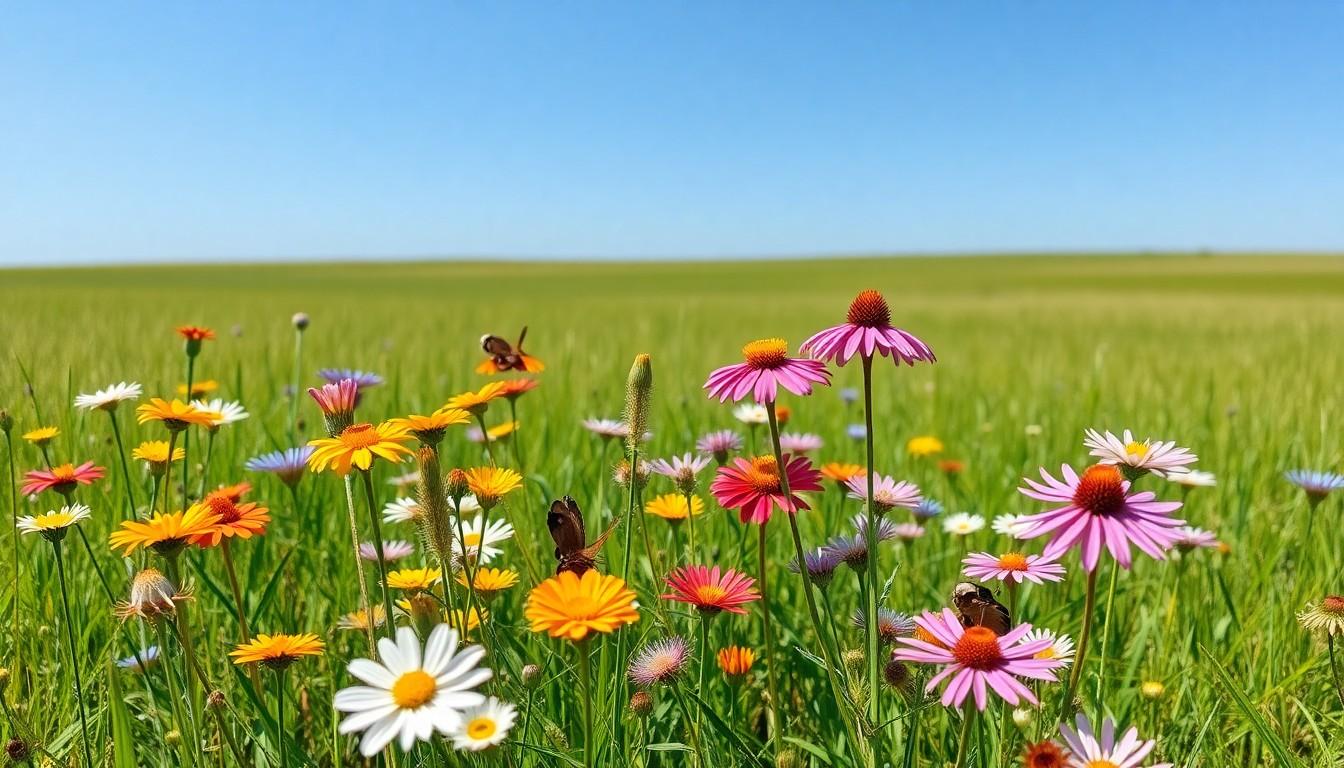
Planning a wildflower garden requires careful consideration of location and flower selection for optimal growth and beauty. A thoughtful approach guarantees an enjoyable outdoor space.
Choosing The Right Location
Selecting a location involves evaluating sunlight, soil drainage, and proximity to water sources. Full sun, typically receiving six or more hours of light daily, promotes healthy blooms. Soil should drain well, avoiding standing water that can hinder plant development. Watering accessibility simplifies maintenance, ensuring plants remain hydrated. Assess local climate conditions that may affect plant survival to tailor choices appropriately.
Selecting Suitable Wildflowers
Choosing wildflowers entails considering native species that thrive in the local ecosystem. Native plants adapt better to regional conditions, promoting sustainability. Height, bloom time, and color variety add dimension and interest. Grouping flowers according to their blooming periods fosters continuous color throughout the growing season. Research local wildflower seeds or plants, noting preferred growing conditions for a successful garden. Resources like native plant nurseries provide valuable insights and help select the right mix.
Design Inspirations For Wild Flower Gardens
Wildflower gardens offer a variety of design inspirations. These gardens encourage creativity while supporting local ecosystems.
Cottage Style Gardens
Cottage style gardens embrace a charming, informal aesthetic. Use an assortment of native wildflowers with varying heights and colors to create a lush, vibrant look. Incorporate rustic elements like gravel pathways or wooden fences for added charm. Include seating areas that invite relaxation among the flowers. Adding garden ornaments such as birdhouses or trellises can enhance visual interest. Group plants according to their blooming periods to ensure continuous color throughout the season.
Modern Minimalist Designs
Modern minimalist designs favor simplicity and clean lines. Select fewer species of wildflowers that complement each other, focusing on color harmony and texture. Implement open spaces and defined borders with low-maintenance gravel or stone paths. Incorporate native grasses alongside wildflowers for a visually appealing contrast. Use straightforward, geometric layouts to emphasize the beauty of each individual flower. Incorporating natural materials maintains a sleek appearance while supporting local wildlife effectively.
Maintaining Your Wild Flower Garden
Regular maintenance is key to a thriving wildflower garden. By staying attentive, gardeners can improve both beauty and biodiversity.
Watering And Fertilization
Watering occurs mainly during dry spells. Focusing on deep watering encourages roots to grow strong. Once established, wildflowers often require less frequent watering. Fertilization is minimal, as most native plants thrive in nutrient-poor soils. A light application of organic compost in early spring can promote growth. Always observe plants for signs of stress, adjusting watering frequency as needed.
Controlling Weeds And Pests
Weeds can compete with wildflowers for resources. Hand-pulling or using mulch helps suppress unwanted growth. Regular monitoring prevents weed overgrowth and safeguards native species. Pests may occasionally target wildflowers, but many beneficial insects manage their populations. Introducing companion plants can further deter unwanted pests. Maintaining a diverse plant community supports a healthy ecosystem, ultimately enhancing the garden’s resilience.
Conclusion
Creating a wildflower garden is a rewarding journey that brings beauty and ecological benefits. By carefully selecting native plants and designing a space that reflects personal style, anyone can cultivate a vibrant habitat for pollinators and wildlife.
Regular maintenance ensures the garden thrives while contributing to local biodiversity. Embracing the charm of wildflowers not only enhances outdoor spaces but also fosters a deeper connection with nature. With thoughtful planning and care, a wildflower garden can transform any yard into a lively and sustainable haven.
